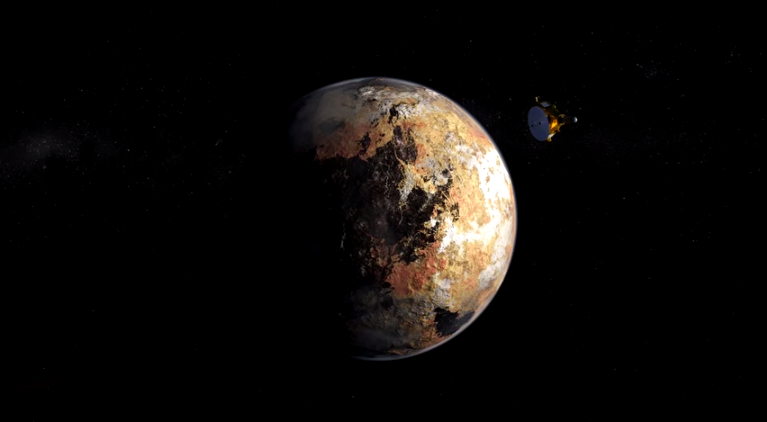

It has been a long, long ride. New Horizons was launched in January of 2006, which is just about 9 years ago (so happy birthday-ish, New Horizons!). It was sent into space courtesy of an Atlas V rocket, and the little craft will approach Pluto at the end of a 9 and a half year journey in July of 2015 (so it still has a little ways to go). It will pass by the dwarf planet and its moons (Charon, Nix, Hydra, Kerberos, and Styx) traveling at a staggering speed of 26,700 mph (43,000 km/h). After the probe completes its Pluto flyby, New Horizons will continue on a path into the Kuiper belt, a disc-shaped region of volatile icy bodies composed mainly of compounds such as methane, ammonia ,and water located past Neptune’s orbit.
And notably, New Horizons has just started its first stages of its encounter with Pluto. “NASA’s first mission to distant Pluto will also be humankind’s first close up view of this cold, unexplored world in our solar system,” said Jim Green, director of NASA’s Planetary Science Division at the agency’s Headquarters in Washington. “The New Horizons team worked very hard to prepare for this first phase, and they did it flawlessly.”
New Horizons is set to engage in a long-range photo shoot of Pluto later this month (January 25th). The images will be notable for several reasons. First, they will help us better understand the strange orbit of this dwarf planet and its many moons. Second, the images will help scientists navigate the spacecraft as it covers the remaining 135 million miles (220 million kilometers) to Pluto.
Unfortunately, the images will show little more than a small, white dot. That is, that’s all they will show until May, when it really starts to get its close encounter. However, the photos to come our over the next few weeks and months will assist us in making the necessary course corrections so that the rest of the mission is successful and goes as planned.
“We need to refine our knowledge of where Pluto will be when New Horizons flies past it,” said Mark Holdridge, New Horizons encounter mission manager at Johns Hopkins University’s Applied Physics Laboratory (APL) in Laurel, Maryland. “The flyby timing also has to be exact, because the computer commands that will orient the spacecraft and point the science instruments are based on precisely knowing the time we pass Pluto – which these images will help us determine.”
“We’ve completed the longest journey any spacecraft has flown from Earth to reach its primary target, and we are ready to begin exploring,” said Alan Stern, New Horizons principal investigator. Learn more about this mission in this timeline of New Horizons. And see the flyby plans in the video below.
